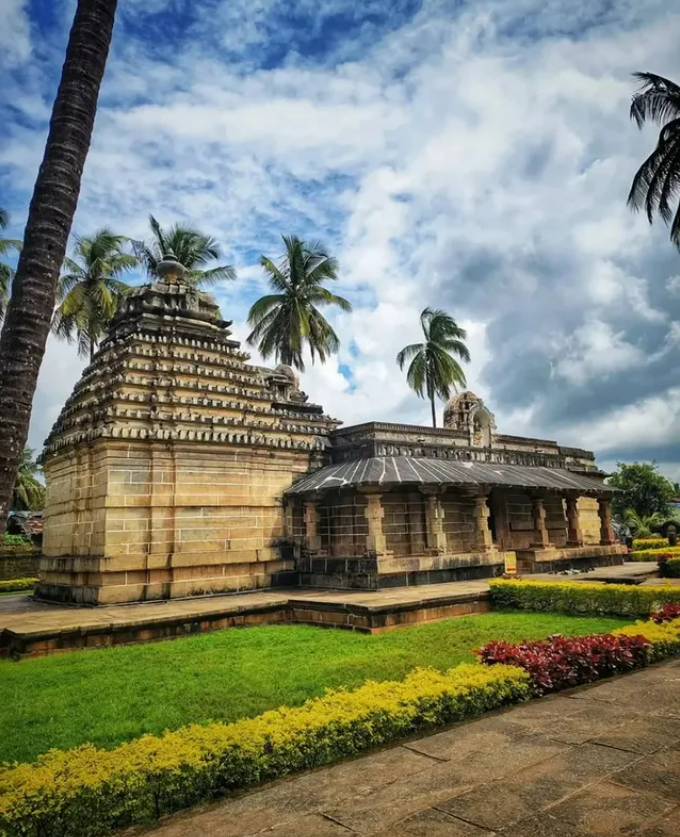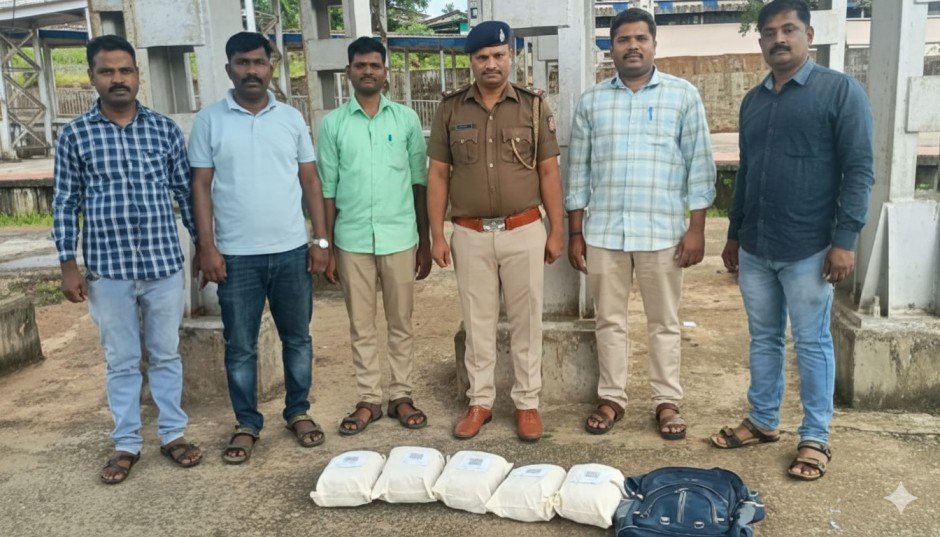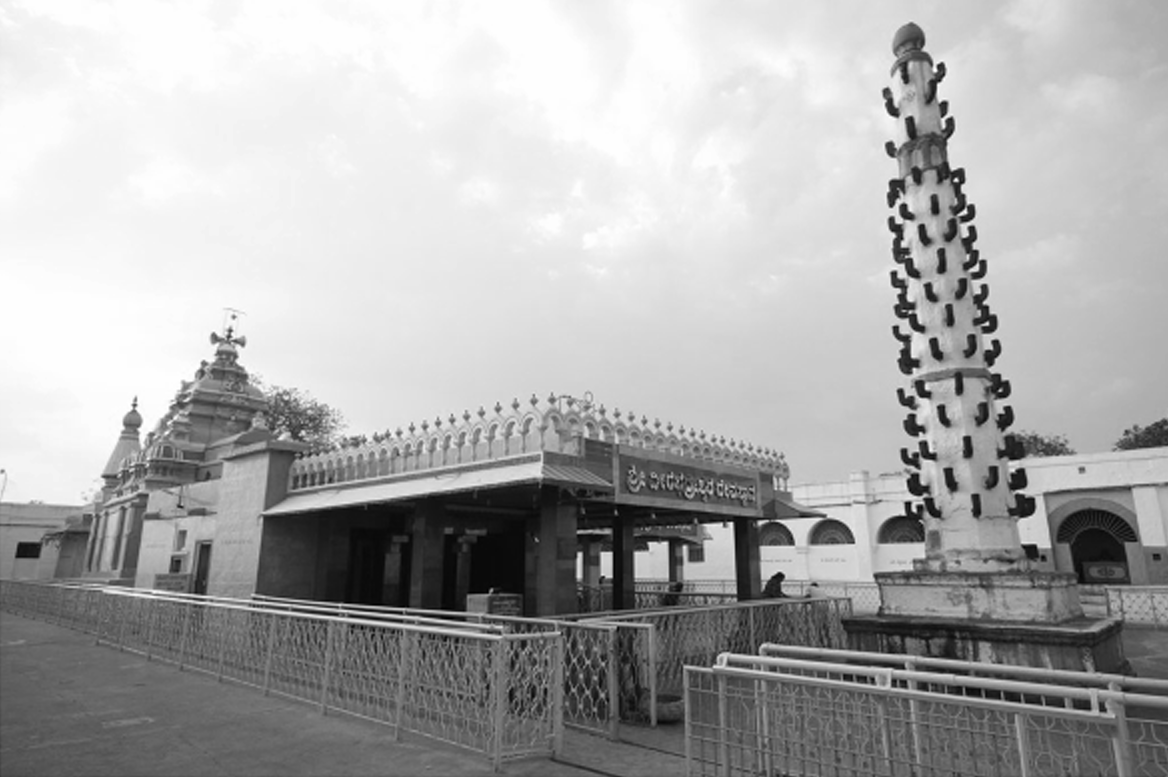
A sacred glimpse of Bhoo Varaha Laxmi Narasimha Temple, where history and divinity merge in Halasi’s tranquil surroundings.

The Bhoo Varaha Laxmi Narasimha Temple is one of the most ancient and revered temples located in Halasi, a historic town nestled in the lush greenery of the Western Ghats, just 42 km from Belagavi in Karnataka. This temple is a significant monument from the Kadamba dynasty, showcasing rich architecture and spiritual heritage.
For Reference: https://www.tirthayatra.org/halasi/
Built in the 5th century AD by King Shivachitta of the Kadamba dynasty, the temple is a fine example of early Kadamba architecture. It features two Garbhagrihas (inner sanctums)—one dedicated to Lord Vishnu, and the other to Bhoo Varaha Swami. The Vishnu sanctum houses an idol of Maha Vishnu in a seated posture, accompanied by idols of Suryanarayana, Mahalakshmi, and a rare swayambhu (self-manifested) idol of Lord Narasimha. The second sanctum contains a five-foot-tall idol of Bhoo Varaha, depicted carrying Bhoodevi in his mouth, installed in 1186–87 AD by King Vijayaditya III.
The temple ceiling displays a beautiful lotus motif, a signature of Kadamba artistry. The inner courtyard is covered with grass, where devotees often gather for singing hymns and offering prayers. The temple complex also includes smaller shrines dedicated to Lord Shankara, Narayana, Garuda, Maruti, Radha Krishna, and a stepped well, making it a peaceful yet spiritually rich environment.
Worship practices at the temple include daily pooja from 7:00 AM to 9:00 AM in the morning and 5:00 PM to 7:00 PM in the evening. Special poojas are performed on Purnima (full moon) days, drawing large numbers of devotees. Major festivals celebrated here include Dussehra, which spans ten days, and Narasimha Jayanti, which is observed with great devotion and rituals.
Reaching Halasi is easy. By road, it is 42 km from Belagavi and 56 km from Hubballi (Hubli), with regular buses and taxis available. The nearest railway station is Belagavi, which is well-connected to many major cities in India. Pilgrims can also opt for organized tours like Tirtha Yatra for a guided spiritual experience.
The best time to visit Halasi is between October and March, when the weather is cool and comfortable, making it ideal for exploring this historical temple and the surrounding natural beauty.







